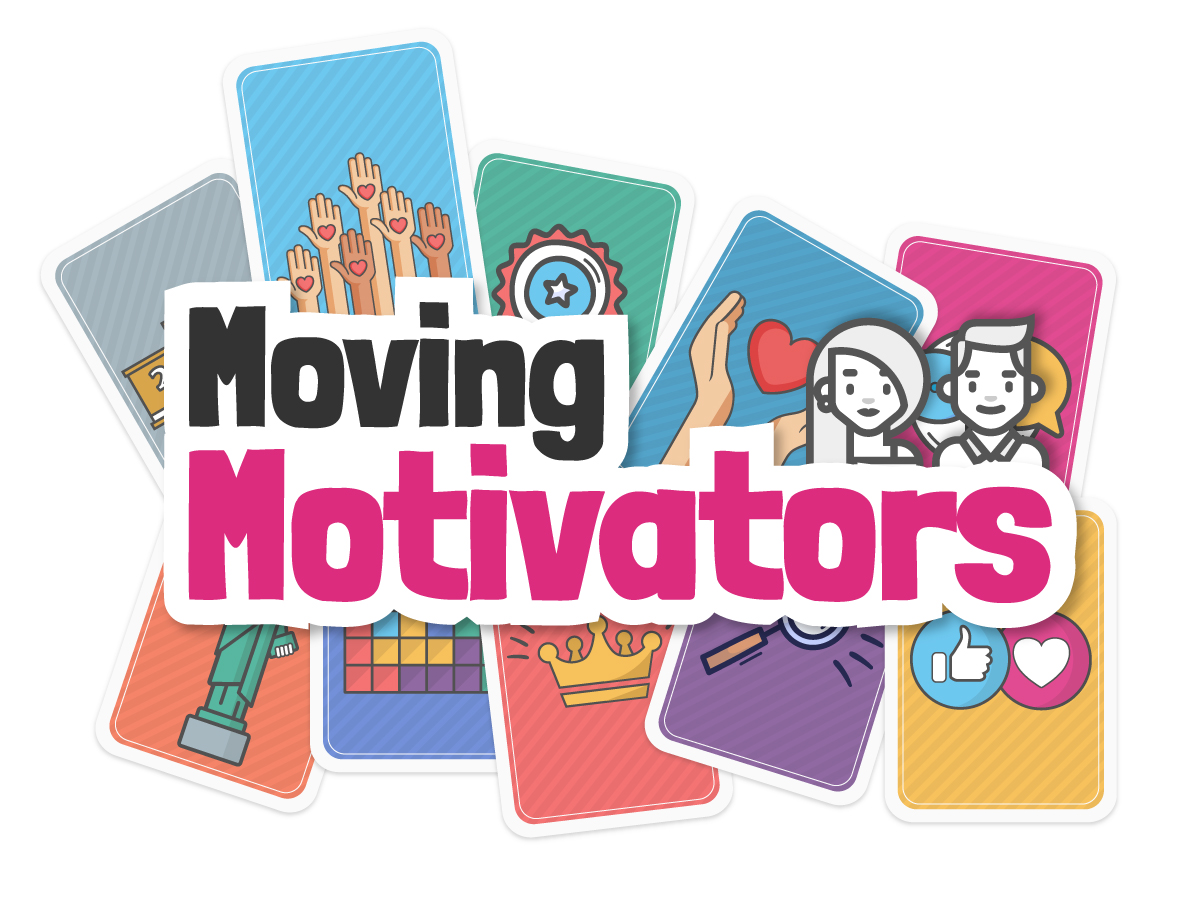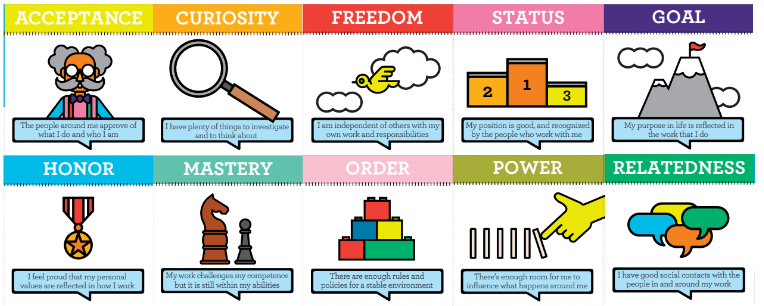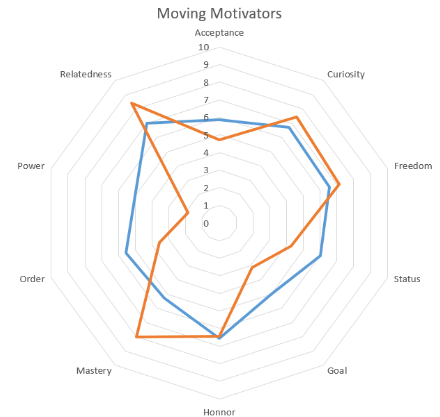One of the most satisfying tasks in my opinion of the Scrum Master is to be a facilitator and a guide for the team. Being a facilitator is not, contrary to what many people think, being a “technical reference”. Being a facilitator is helping the team to know the Scrum framework in depth, and helping the team to resolve the impediments that appear in the course of their work.
In order to facilitate and guide, it is first necessary to know the team as a whole, but also the people individually. This knowledge includes facets that go beyond the strict application of their professional role. It is necessary to know at least what aspects positively motivate them to be more efficient, to be more careful with the quality of what they do, or to be more flexible in the face of changes, etc.

Jurgen Appelo, in his book Management 3.0: Leading Agile Developers, Developing Agile Leaders, proposes a list of attitudes or skills that a person gives special importance to when it comes to feeling motivated. He calls these attitudes Moving Motivators.
Moving Motivators help the Scrum Master get a picture of the attitudes that generate motivation in team members; and can, with the help of the team, agree on a general motivation map for the team. Subsequently, with this valuable knowledge, the Scrum Master can look for proposals that help the team achieve these aspects.
The attitudes that Jurgen Appelo identifies are the following:
This activity is usually carried out at very early stages of the project. When the team is being formed and the Scrum Master needs to know the capabilities and motivations of the different members. From my experience, it can be interesting to have a first individual session with each member of the team to obtain information about the motivators. Subsequently, it may be convenient in some cases to let some time pass for the team members to get to know each other, to later review these motivators individually, with the aim of creating a team map of team motivations.
The tools for the activity consist of a card game where each of the motivating attitudes is described, and a motivation map.
Each of the motivating attitudes explained at the beginning appears in the card game.

The motivation map is used to display in a graph the selection of motivating attitudes that one or more team members have made in the exercise.

For an individual session, consisting of a team member selecting the attitudes they consider most motivating, and then creating a motivation map for that person, we may need around 20-30 minutes per person.
For a session consisting of creating a consensual motivation map for the team, based on the analysis of the data obtained individually for each team member, we may need between 30 and 60 minutes.
The first goal as Scrum Masters is to know what motivating attitudes characterize each of the team members. The first is to organize individual sessions with each of the team members.
In these sessions we will use the card game explained above. We will show the cards and resolve any doubts about their meaning before starting the game.
The question to ask the person doing the exercise is: What moves you?
The person will order the cards based on what they consider to motivate or mobilize them the most. The order will be carried out by placing the most motivating cards on the left, and the least on the right. Finally obtaining a line of ordered cards similar to those shown in the following image:

Once this is done, the Scrum Master asks the second question of the exercise: Briefly explain why you have carried out this ordering?
Here the person who has done the exercise has the opportunity to briefly explain why he considers that some attitudes are more motivating; or because others are less so. In this explanation he has the opportunity to correct the order if he believes it is necessary based on the reflection process that he can discuss with the Scrum Master.
Finally, and without changing the order of the cards, the Scrum Master asks the interviewee what degree of achievement they believe they currently enjoy for each of these attitudes. To answer this, the interviewee will move up those attitudes that they believe are currently satisfied. They will move down those attitudes that they believe are not being reflected in their current situation. And they will leave those attitudes that they do not know if they are currently satisfied with, or do not believe are relevant to be satisfied, still in place.
The final result is a card arrangement similar to the image below:

As the last part of the exercise, both the Scrum Master and the interviewee can build the map of their motivators in a way similar to the one shown in the following image:
 This graph shows two coordinates for each motivator. In blue we draw the degree of importance that the interviewee has given to the 1st part of the exercise. And in red we show the results corresponding to the level of coverage that the organization gives to each of these motivators, according to the vision that has been given in the 3rd part of the exercise.
This graph shows two coordinates for each motivator. In blue we draw the degree of importance that the interviewee has given to the 1st part of the exercise. And in red we show the results corresponding to the level of coverage that the organization gives to each of these motivators, according to the vision that has been given in the 3rd part of the exercise.
Moving Motivators management30.com (https://management30.com/practice/moving-motivators/)
Retrospectiva con Management 3.0: Moving Motivators Knowledge21 (https://es.k21.global/blog/retrospectiva-moving-motivators)
Moving Motivators (Champfrogs) | Conociendo los motivadores de la gente JorgeRuizAgile (https://www.youtube.com/watch?v=-ZfpcFBBDYc)